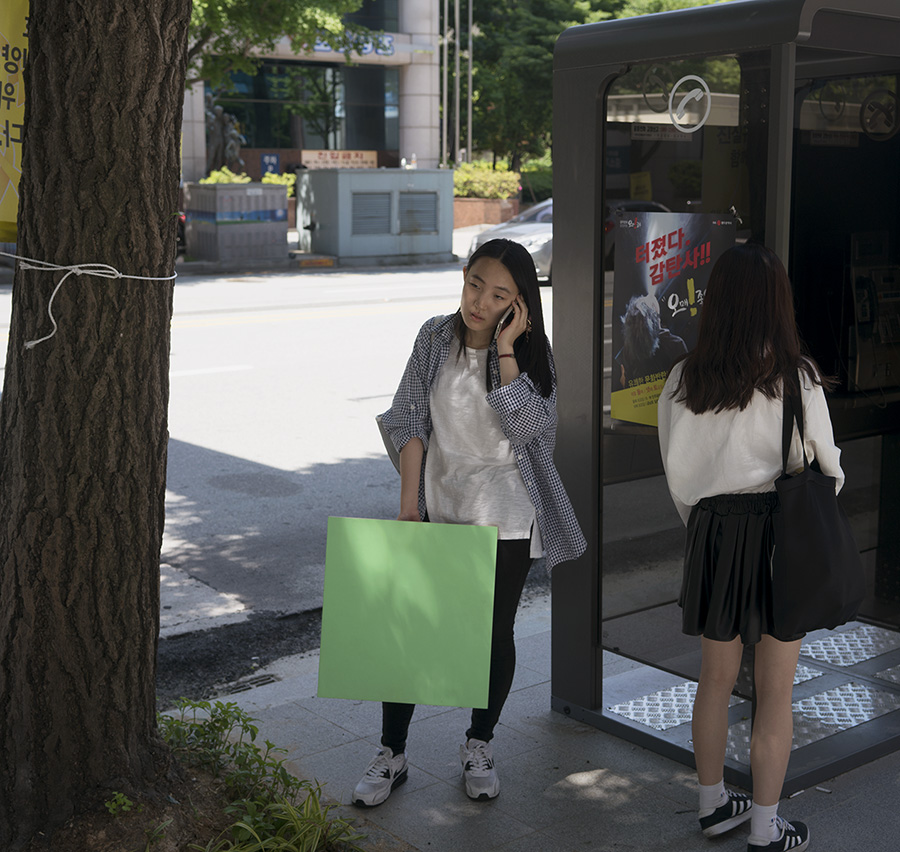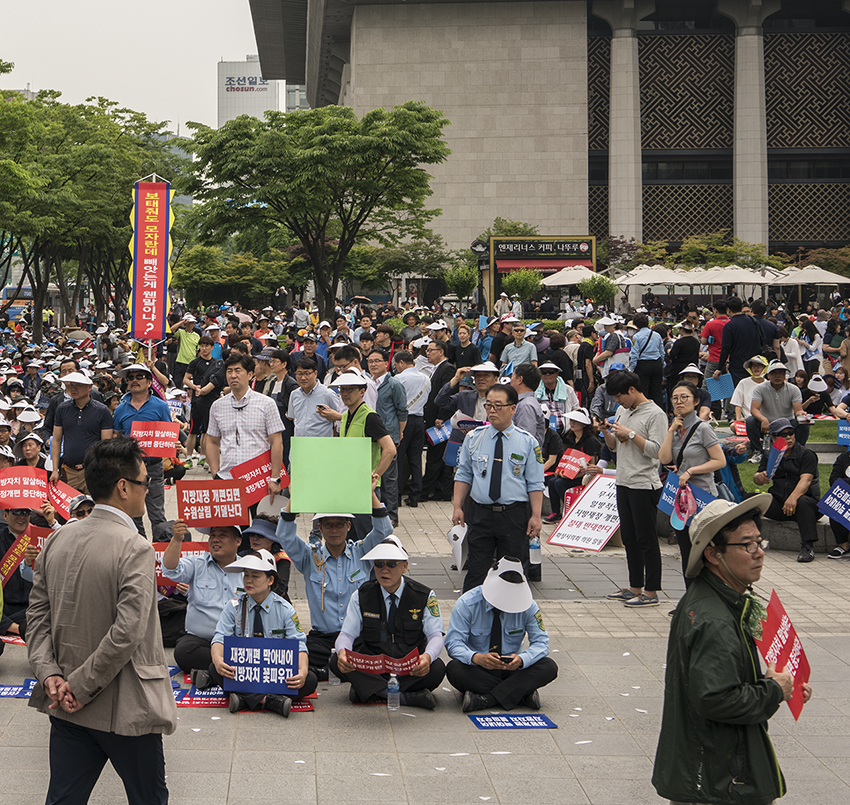Photographs of Paintings Carried to Places where the Movement for Democracy in South Korea Happened, and Four Examples of what was Produced
A collection of photographs are hung on a wall, and in each image an individual holding a green rectilinear form is seen either standing or walking, idling or heading somewhere; presenting a painting to others. Unknown at the time, these green objects will be populated with different golden forms, yet to become visible as they are being photographed. Four examples of these paintings were then made in New York, and are presented here next to the photographs to produce an abstract narrative of what might have happened at these sites of democratic rebellion. In May 2016, Ashford visited Gwangju and Seoul; during that time he asked actors to present unfinished paintings to the sites of memorialization of the Uprising, to places of imprisonment and death, to where the movement for greater democratic representation still grows, and to the open-air street celebrations that happened before the anniversary of the event itself. It is only by thinking about politics and aesthetics together that, in Ashford’s own words, “a possibility of resistance can be found in an emotional connection to a history that is remade.”
Ashford would like to thank the following people who contributed time and effort to this project: In New York: Jaena Kwon, Won Cha, Simon Ko, Brianna Leatherbury, Christhian Diaz.  In Gwangju: Soyoung Park, Junsoon Song, Hanbyul Kim, Minkwan Choi, Heejoo Kim, Hyejoo Jeon, Ye-Ryung Lee, Ryueun Kim.  In Seoul: Minjung Jung, Seng Man Ko, Minkyung Kim, Yusun Jung, Hyunji Kwak, Eunice Koo, Kyudon Jang.
Commissioned for The 2016 Gwangju Biennial. View GB11 Installation here.
View GB catalogue here _(link)
View Edouard Glissant’s essay “For Opacity” here. _(link)
Historical images: _(link)


























